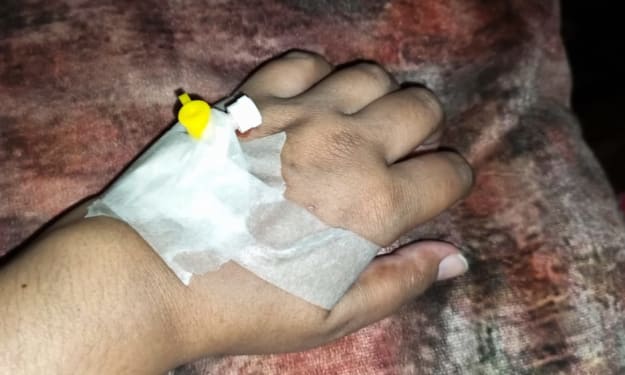The Issue in Diagnosing Sexual Dysfunction
The things we don't think about when we think about sex!

If this isn’t something I’ve ever mentioned before in my writing, here’s the latest scoop:
I’ve been completing a Graduate Certificate in Sexual Health through the University of Alberta! It’s a virtual program, so I’ve still been able to keep working while completing school work – and it’s definitely been busier than I anticipated (but still very much wonderful and I’m having a blast). I’m learning tons in the realm of sex positivity and sexual health, and I can’t wait to really start putting this new knowledge to work in my client sessions.
An area I find super interesting when it comes to sexual health is the unique experience of women, particularly when it comes to orgasm. While it’s not something I address specifically in my work (sex therapy is outside of my scope as a dietitian!), I do find it incredibly important to have a strong understanding of sexuality and how it intersects with our health.
Women may struggle with intimacy throughout eating disorder treatment if body image is a significant concern for them and impacts their ability to engage in sexual activities with partners. During and after pregnancy, the idea and enjoyment of sex might be completely different and potentially distressing. And we can’t forget the menopause transition and how it may impact both the physical and emotional changes in sexuality. Female sexual dysfunction is a concern worth looking at through a critical feminist lens.
But before we get into that, let’s review what female sexual dysfunction actually is.
Female sexual dysfunction is considered persistent, recurrent problems with sexual response, desire, orgasm or pain. Now here’s the key part: these things need to distress a person or negatively impact their relationship with their partner(s). It’s important for us to really think about this. What actually constitutes distress when it comes to sex? How persistent is persistent? And does a negative impact mean the same thing in all relationships?
There are a few different types of sexual dysfunction, and with each their own unique elements to dive into.
Low sexual desire involves a lack of interest in sex and a low willingness to be sexual. I think it’s important for us to consider what each person’s interests are when it comes to sex, and if this is something partners can explore with each other. If women are with a partner that doesn’t prioritize their interests when it comes to sex, this can certainly be an area that needs extra attention. And if sex doesn’t ever feel rewarding or enjoyable, we definitely are not going to make an effort to get it to happen.
Sexual arousal disorder may still have sexual desire, but there are difficulties with becoming aroused or maintaining arousal during sexual activities. While there may be very physical reasons why arousal is difficult to maintain, considering the emotional or mental components of arousal is necessary too. When women are distracted or stressed on a regular basis, it would make sense that they’re not going to be as focused on staying aroused during sexual activities or that it’s more challenging to become aroused. I don’t know about you, but worrying about bills, feeling overwhelmed with caring for children, pets, work or older parents, or being exhausted doesn’t turn me on in any capacity.
Orgasmic disorder involves persistent or recurrent difficulty in achieving orgasm after “sufficient” sexual arousal and ongoing stimulation. The “sufficient” is the part to be critical of – is this based on the provider’s definition, the partner’s definition, or the woman? We don’t talk enough about the importance of the clitoris when it comes to female orgasm – if penetration is the only stimulation provided, it certainly stands to reason that reaching orgasm is going to be challenging.
Sexual pain disorder is pain associated with sexual stimulation or vaginal contact. This can also vary by person – how do we classify pain? There are definitely strategies to help reduce or manage pain during sex, and I can’t praise pelvic floor physiotherapists enough for the great work they can do.
I’m a big fan of Emily Nagoski’s “Come As You Are” as a learning opportunity around sexual dysfunction. If we want to really help women with sexual dysfunction, we definitely need more opportunities to talk about it openly and honestly!
About the Creator
Emily the Period RD
I help people with periods navigate menstrual health education & wellness with a healthy serving of sass (and not an ounce of nutrition pseudoscience).
Enjoyed the story? Support the Creator.
Subscribe for free to receive all their stories in your feed. You could also pledge your support or give them a one-off tip, letting them know you appreciate their work.






Comments
There are no comments for this story
Be the first to respond and start the conversation.